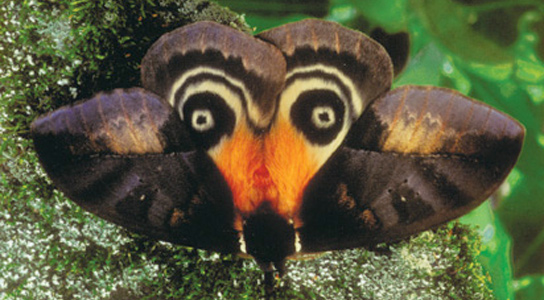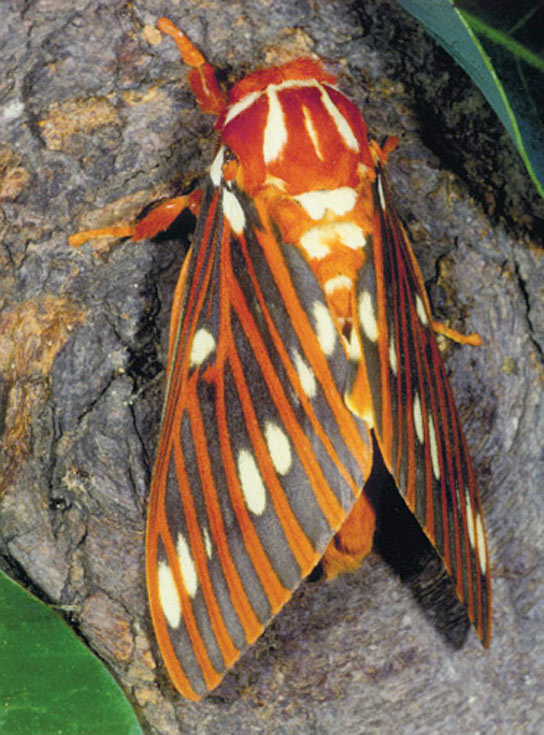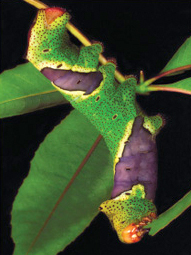
Automeris egeus moth displays its eye spots.
Periodical invasions of cicadas are common across the eastern United States and giant silk moths (Citheronia azteca) might have evolved to resemble cicadas as a form of Batesian mimicry in order to make them less appealing to predators.
Philip Howse speculates in his book Giant Silkmoths: Colour, Mimicry and Camouflage that when cicadas are eaten by small birds and mammals, they emit extremely loud shrieks as Batesian mimicry, which is the imitation of a nonpoisonous species of a poisonous or unappetizing one.

The pattern of the giant silk moth Citheronia azteca.
In the book, Howse showcases his findings thanks to the photographs of Kirby Wolfe. They focused on the giant silk moths, members of the Saturniidae family. The book offers pages of colored moths from all over the world, and Wolfe offers notes on how to collect and raise silk moths.
 They also studied caterpillars. Titae lemoulti’s markings break up the overall shape of its body, making it harder to see by predators, while Automeir egeus wing patterns look like the eyes of an owl, hopefully deterring predators.
They also studied caterpillars. Titae lemoulti’s markings break up the overall shape of its body, making it harder to see by predators, while Automeir egeus wing patterns look like the eyes of an owl, hopefully deterring predators.
Howse notes that this mimicry technique might not be as successful as previously thought because of the large presence of moth remains, including the ones of Actias luna, beneath owl nests.









Be the first to comment on "Cicadas Might Have Given Rise to a Form of Batesian Mimicry in Citheronia Azteca"